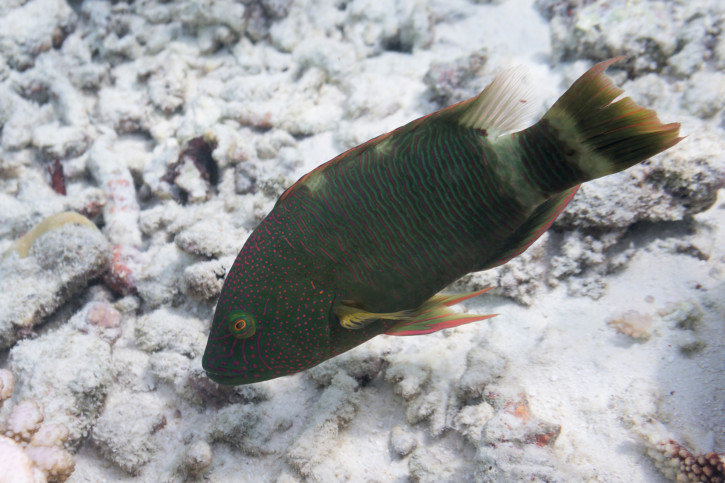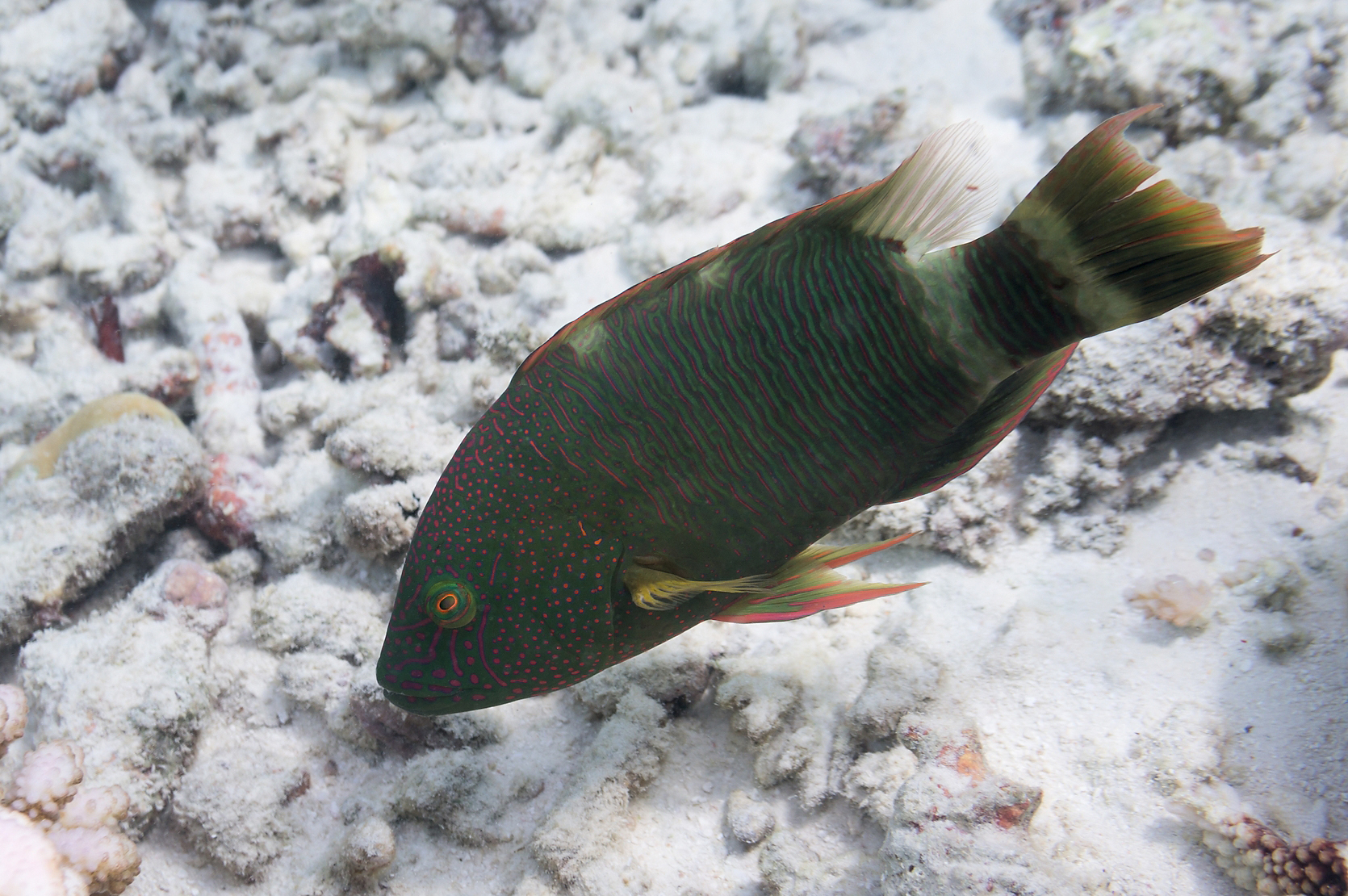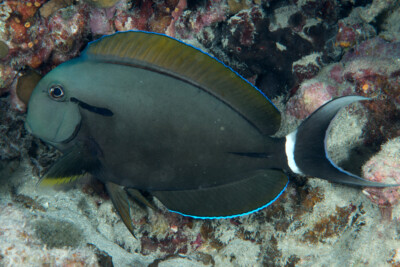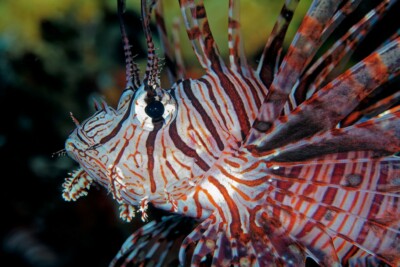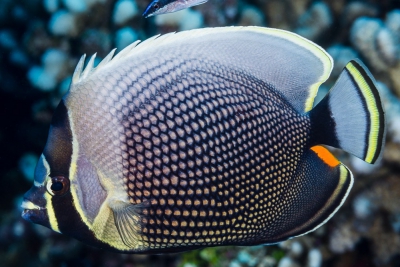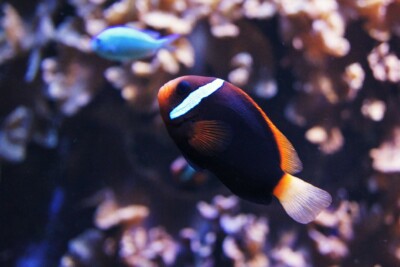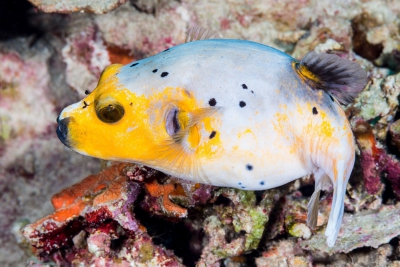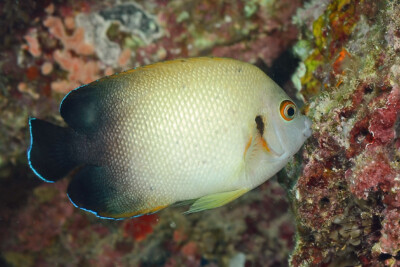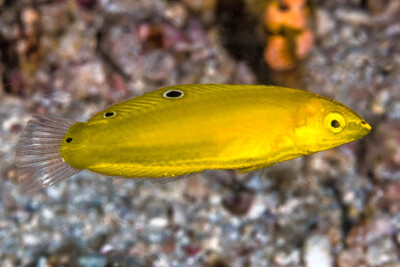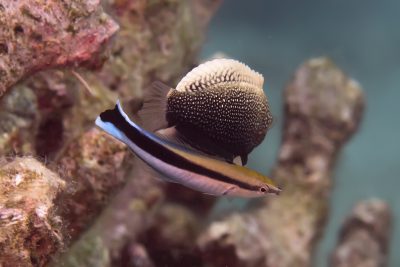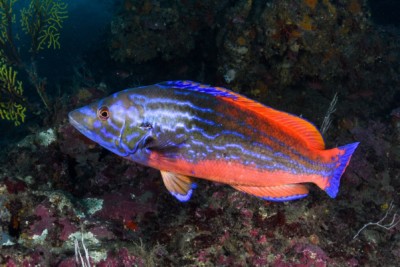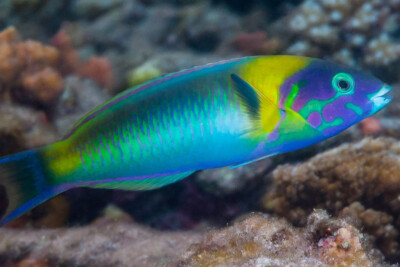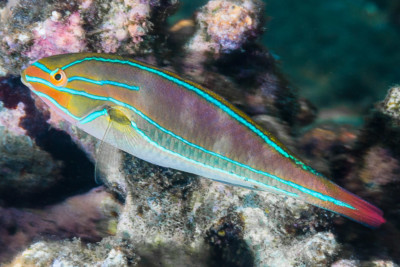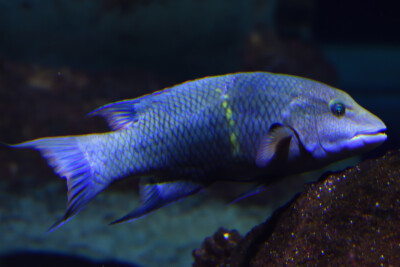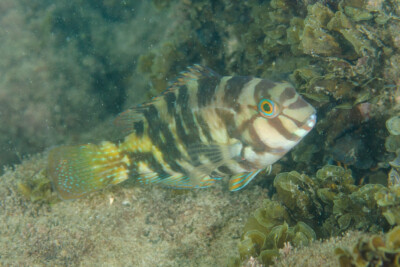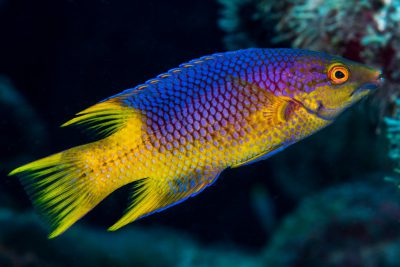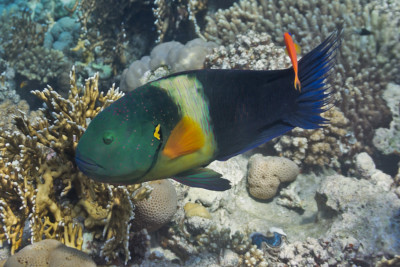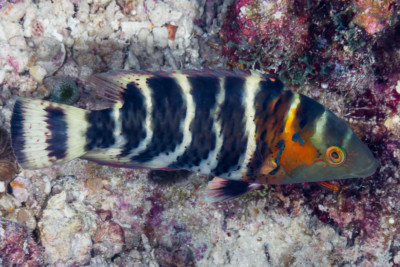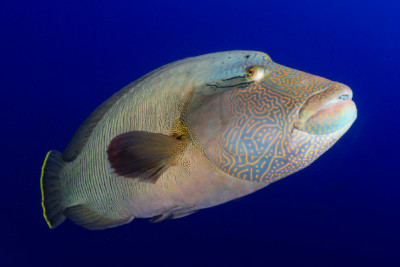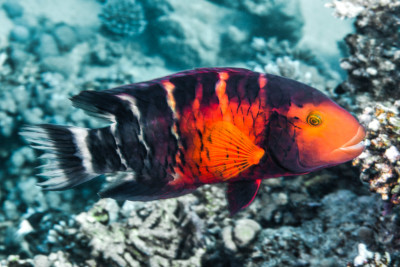Introduction
The Cheilinus trilobatus, more commonly known as the tripletail wrasse, is a reef fish found in a large part of the Indo-Pacific zone. Despite reaching 45 cm as an adult, this shy solitary fish is difficult to observe up close.
Who is it?
Genus Cheilinus
These kinds of fish belong to the Labridae family, more commonly called wrasses. In this family, a phylogenetic study describes two subgroups of the Cheilinini tribe, in which genus Cheilinus is included. This genus is close to Doratonotus, Epibulus, Oxycheilinus and Wetmorella genera. Although most of the species of genus Oxycheilinus were originally classified into the Cheilinus genus, in 2020, only 7 species are officially described as Cheilinus members.
All of these 7 species are predators in coral reefs. The larger species, including humphead wrasses, are on the highest levels of the food chain. These diurnal and territorial fish are easily caught by fishermen and hunters. All species are in danger of extinction.
Their body is moderately compressed, with a length equal or superior to the head. The colored patterns on their bodies often includes distinct vertical bars or marbling, or light sparse spots. Beside the wrasse family, these fishes are regularly confused with parrot fishes, such as Calotomus, Cetoscarus or Scarus fish.
These oviparous fishes form distinct pairs for reproduction. In addition, Cheilinus wrasses are protogynous, meaning that they are born female and then some of them turn into male. While growing, juveniles change color and sometimes patterns too.
Morphology
-
Average size35 cm
-
Maximum size45 cm
-
Patternhorizontal stripes
-
Average size35 cm
-
Maximum size45 cm
-
Patternhorizontal stripes
How to recognize This fish ?
The color and patterns evolve throughout growth. As this species changes sex during its development, subadults are all females. Most descriptions of individuals correspond to adults, and therefore to males.
Juvniles and subadults in the initial phase are mostly dark beige with four wide darker vertical bands. The first band is located at the base of the dorsal fin and the last one on the caudal peduncle.
Fins: The dorsal fin contains 9 spines and 10 soft rays. The dorsal, anal, and pelvic fins are yellowish to green, with red stripes and a gradient border in the same color. The caudal fin is greenish with a red margin. It is trilobed and the caudal peduncle is barred with a wide black band surrounded by a white band.
It is distinguished from C. chlorurus by the number of spines on the dorsal fin and the presence of a bluish spot on the flank. Large individuals can be easily differentiated from C. fasciatus and C. quinquecinctus that have a large reddish-orange spot on the front of the flanks.
Sexual dimorphism
Males are indeed larger than females. Over time, the bands tend to fade and may even only be visible on the dorsal fin in old individuals.
Behaviour & Life cycle
-
dietcarnivorous
-
Sociabilityliving as a couple or alone
-
territorialYes
-
Way of livingdiurnal
Adult, this fish is mostly observed solitarily. It is able to change color to blend in with the surroundings. A diurnal hunter, it retreats into caves and crevices in the reefs at nightfall. Young individuals live in seagrass areas as well as in areas rich in stinging corals, in shallow lagoon reefs. It is territorial and feeds mainly on hard-shelled prey such as mollusks, sea urchins, and crustaceans. Large individuals may opportunistically hunt some reef fish.
Reproduction
-
Reproductionovipare qui pond en eau libre
-
Hermaphroditeprotogynous
The tripletail wrasse is an oviparous fish that spawns in pairs in open water. Like other species in its genus, the individual is always born female. As it grows, it will change sex to become male, in what is called protogynous sequential hermaphroditism. Most small adults observed are therefore females.
Harmless species
This species does not represent any particular threats to humans when encountered in its natural environment.
Origin and distribution
What is its habitat?
Natural environment characteristics
-
Temperature25 - 30 °C
-
Depth1 - 30 m
Biotope presentation
The tripletail wrasse is a fairly common inhabitant of shallow reefs, generally at depths of less than 20 meters. Larger individuals can be observed in deeper waters.
Species of the same biotope
Fishkeeping
Not recommended
We do not recommend keeping this species in an aquarium. It has unpredictable needs which, if not met, generate significant stress, potentially leading to a shorter life expectancy, an interruption of its growth or the development of pathogens.
To go further
Sources & Contributions
Participation & Validation
The Fishipedia team and specialist contributors are committed to providing high-quality content. However, although the information comes from scientific sources or testimonials from specialists, the cards may contain inaccuracies.

Adrien Falzon

Benoit Chartrer

Julie Magnus
Translation
Translation done with the valuable contribution of our translators, who make this information available to a wider audience. We sincerely thank them for their commitment.
Scientific partners
Tags
#Labridae
#Cheilinus
#barrière de corail
#lagon
#récifs extérieurs
#Persian Gulf
#Great Barrier Reef
#mer d'Oman
#Philippine Sea
#Sea of Japan
#Red Sea
#South East Asian Seas
#Indonesian seas
#western Indian Ocean
#Western Tropical Pacific Ocean
#Bali
#Mauritius
#Réunion
#Lombok
#Nusa Penida
#French Polynesia
#Zanzibar Archipelago
Species of the same family
Same genus
Species of the same biotope
